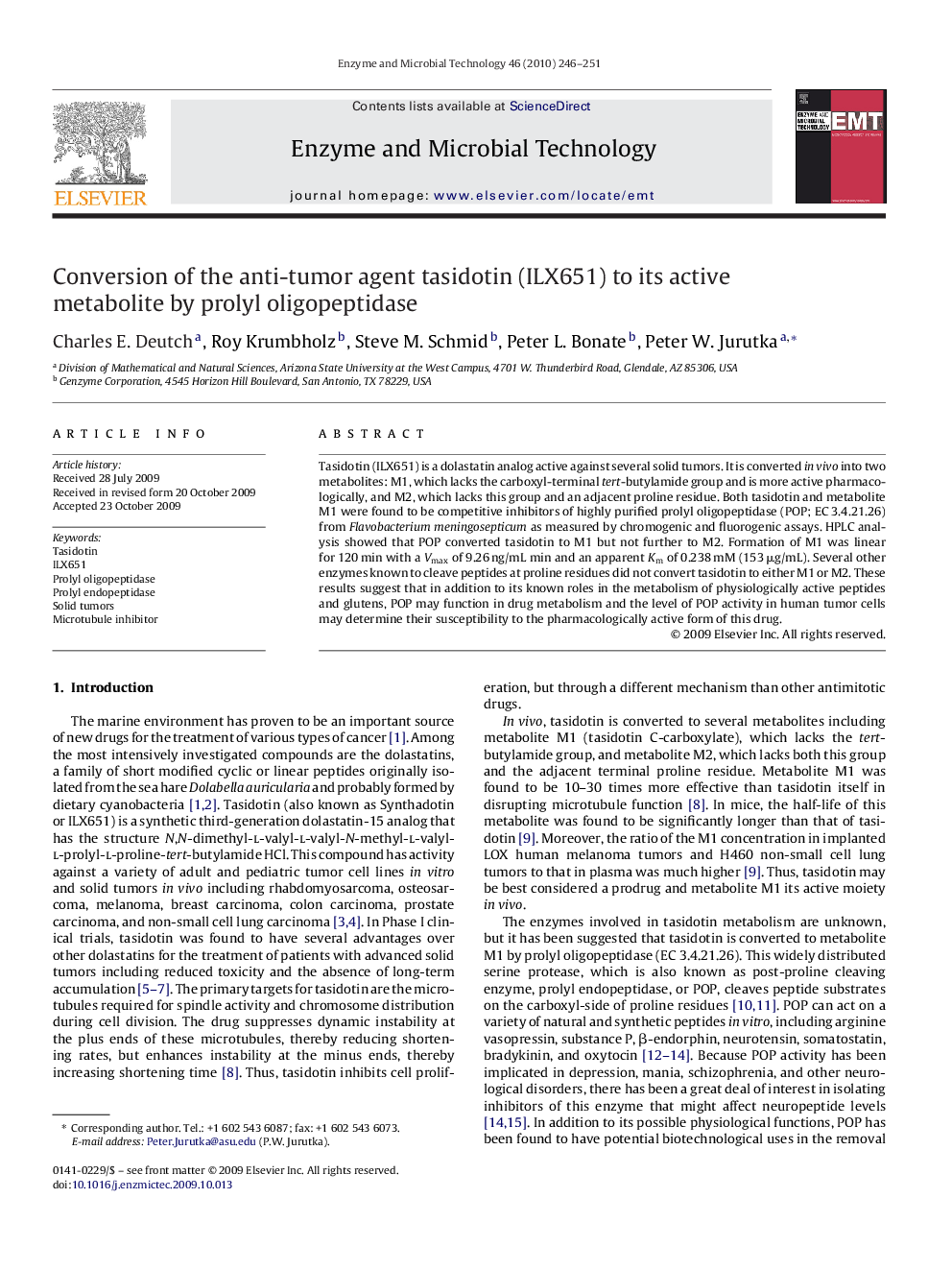| Article ID | Journal | Published Year | Pages | File Type |
|---|---|---|---|---|
| 17636 | Enzyme and Microbial Technology | 2010 | 6 Pages |
Tasidotin (ILX651) is a dolastatin analog active against several solid tumors. It is converted in vivo into two metabolites: M1, which lacks the carboxyl-terminal tert-butylamide group and is more active pharmacologically, and M2, which lacks this group and an adjacent proline residue. Both tasidotin and metabolite M1 were found to be competitive inhibitors of highly purified prolyl oligopeptidase (POP; EC 3.4.21.26) from Flavobacterium meningosepticum as measured by chromogenic and fluorogenic assays. HPLC analysis showed that POP converted tasidotin to M1 but not further to M2. Formation of M1 was linear for 120 min with a Vmax of 9.26 ng/mL min and an apparent Km of 0.238 mM (153 μg/mL). Several other enzymes known to cleave peptides at proline residues did not convert tasidotin to either M1 or M2. These results suggest that in addition to its known roles in the metabolism of physiologically active peptides and glutens, POP may function in drug metabolism and the level of POP activity in human tumor cells may determine their susceptibility to the pharmacologically active form of this drug.
